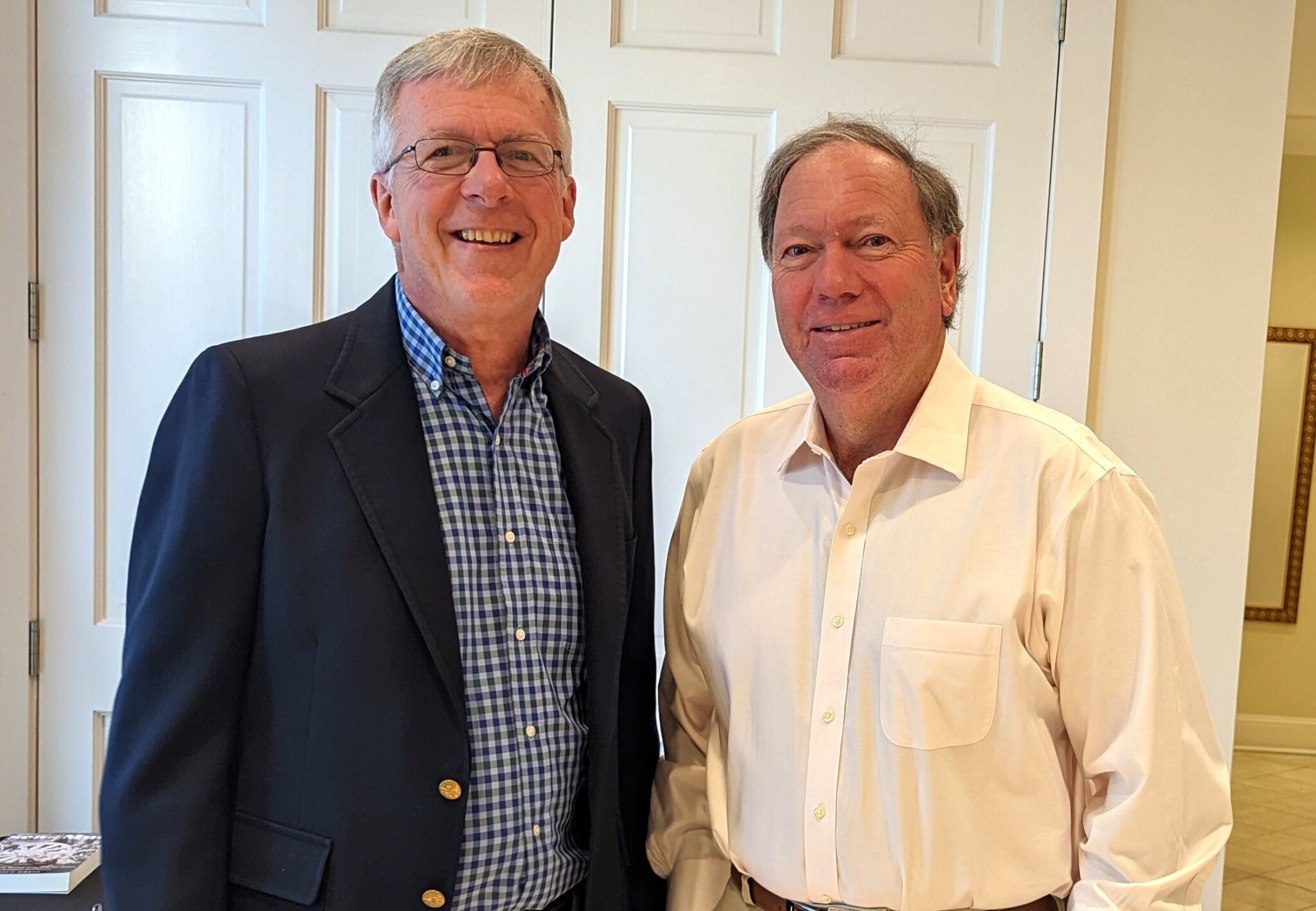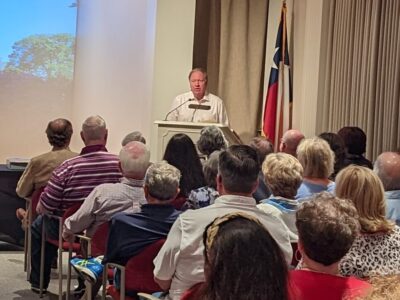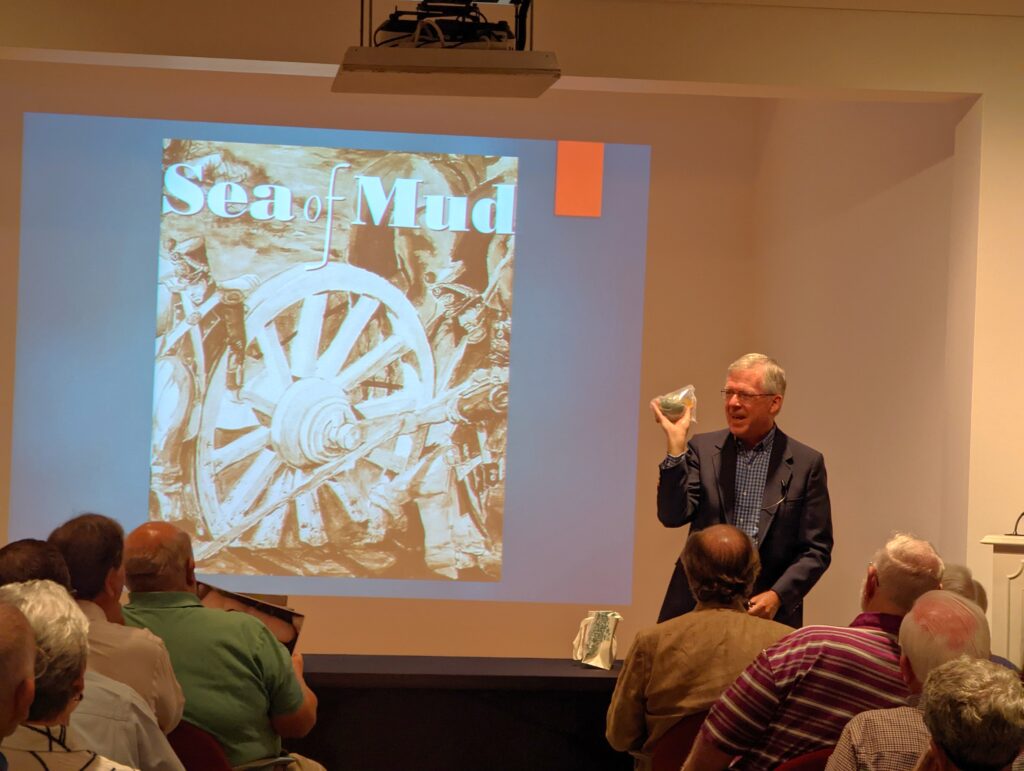
Beaumont, TX; September 16, 2022 – An overflow crowd, eager to learn about Texas history, packed the house on Sept. 15 for the McFaddin-Ward House’s first 2022-23 Lecture Series event. The night featured presentations by William “Bill” Wilson and Gregg Dimmick, which centered on the McFaddin Family at San Jacinto and the retreat of the Mexican Army after San Jacinto.
A 6th generation Texan and great-grandson of the original occupants of what is now the McFaddin-Ward House Museum, Wilson shared excerpts from a letter written by written by William McFaddin describing his participation in the Battle of San Jacinto on April 21, 1836, the final and decisive battle of the Texas Revolution. The original letter was lost when the McFaddin home burned in 1905 but had been published in the Beaumont newspaper.
“We are fortunate to have the text of the letter William sent his father James from the battlefield,” said Wilson. “We need to tell the stories of our parents and grandparents. We can go back and look at census records or a will or a land sale to see where people were, when people were, but it doesn’t tell us who they were. Only these kinds of stories give us insight into who people were.”

Ida McFaddin, speaks to a packed house.

Author of Sea of Mud, the Retreat of the Mexican Army After San Jacinto, An Archaeological Investigation, Dimmick discussed the retreating Mexican army following the Battle of Coleto Creek near Fannin, Texas in 1836 during the Texas War for Independence. After surrendering to Mexican forces, Col. Fannin and his men were executed in nearby Goliad, inflaming the Texas cause and spurring the subsequent victory at San Jacinto.
“There were about 2,500 Mexican troops that were close to the battle of San Jacinto and started a retreat, but, unfortunately, they got stuck in the mud,” Dimmick explained. “That was a major factor in the outcome of the Texas Revolution, yet it’s a story that’s not even known in Texas history. Lots of times history is written by the winners, and you don’t get the story of the losing side.”
An avocational archaeologist, Dimmick also shared insights and examples of artifacts from his archaeological digs at the Fannin battle site and San Jacinto battlefield.
McFaddin-Ward House executive director, Tony Chauveaux, said this is just the first of what will be a “truly remarkable and eclectic” series of programs.
“Our lecture series is one of the most popular of the many programs offered by the McFaddin-Ward House, and the 2022-23 line-up will focus on topics that are both local — highlighting the Port of Beaumont and Magnolia Cemetery — and national — featuring programs on historical monuments and the nation’s finest folk and traditional artists,” Chauveaux stated.
Built in 1905-1906 in the distinctive Beaux-Arts Colonial style, the McFaddin-Ward House reflects the lifestyle of the prominent family which lived in the house for 75 years. The museum features docent-led tours of the home, year-round events, a carriage house, and gardens. Funding from the Mamie McFaddin Ward Heritage Foundation ensures that the museum’s programming is free and open to the public.

 Viewpoints Vol 38 – No 4
Viewpoints Vol 38 – No 4